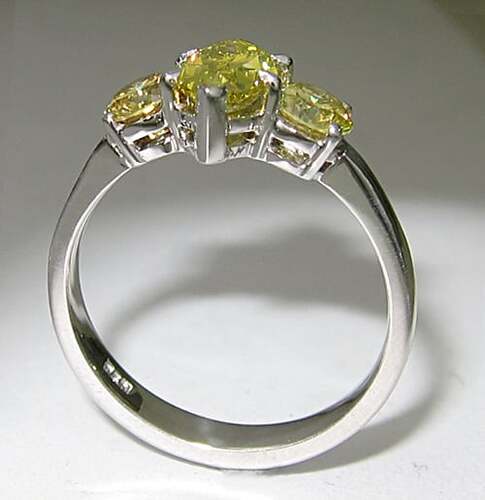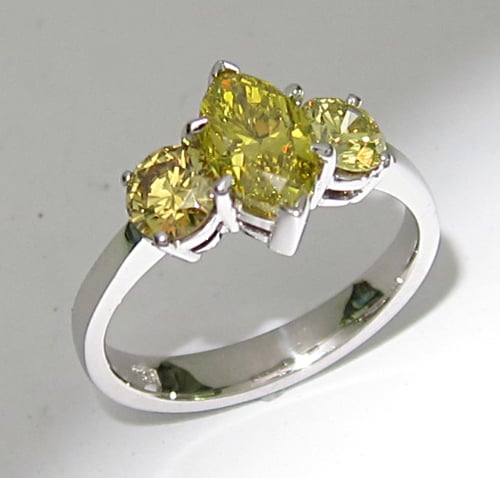Hello Thomas,
“Frankly, I don’t need he income”- if this is correct, why then are
you asking about realistic pricinge? A well as asking family,
friends, etc- who I presume are not jewelers- about the issue? It
make no sense to me …but that’s just me! One either needs to recoup
the costs plus labour plus overhead, plus consultation time for
custom design and fabrication work or simply-prices things according
to what seems to be reasonable compensation for the enjoyment
attained while engaging in one’s hobby.
If it were a business(an ongoing service or provision of goods
offered to clientele expecting some semblance of regular hours and a
place at which they can seek the goods or service(s) the profits
thereof sustaining the members of a household, in all likelihood,
exclusively and) which those profits insure that the business helps
the household meet, an at least subsistence level, above poverty one
of the mot important operations i attention to effective profit and
losses that help the owner(s) project goals for the future - not only
of their ‘brand’, but for growth, marketing, and human resources
determining the success or failure of that business to remain viable
as an Independent compared to, for instance, truly /strictly retail
situations that typify the vast majority of reselling jewelers and
jewelry chain stores that outsource practically all of their 'custom’
work perhaps changing watch batteries or links in a band! Honestly, I
always find it -funny or perplexing if not questionable- when
individual’s profess that they “don’t need the money” but conversely
have a business of some sort ! That said, The materials, and I mean
ALL the materials,: from the obvious precious metals costs (even base
metals if that is the media your custom job requires), stones or
replacement stones, or matching stones to be set, and the consumables
like solder (which in the case of plumb golds of any karat or even
silvers - to replace an inventory item you may have bought 10 years
ago is a quite different line item/cost today. So you have to account
for the replacement cost of your consumable bench chemicals, goods
and tools (ie. piercing saw blades)when you are inventorying and
calculating the costs involved in fabrication and finishing all the
way to packaging. I note “inventorying” because many independent
jeweler’s skip this step, and don’t realise how much they loose not
only per job, but in any period one accounts for in terms of
profitability at the bench and in marketing of which packaging is
part! For example, one bottle of Cupronil Flux (admittedly, my
favourite! and in my opinion the hands down best on the market!) may
cost $15.00 for a quart but without flux you can only perform cold
connections, and the consistency of your workpieces will not be
maintained if you use something else “in-a-pinch”- so it’s value
transcends the 15$ and becomes at least $1.00 per use since
consistency and reliability of your joins is an important factor in
the reputation you have built with clients or are building. in other
words, the little things are often overlooked.
As far as metals 2.5 x cost is fairly standard and if it is anything
more than cut from a sheet or wire (i. e.- roll printing) that
entails a fabrication charge on top of the base price to the client
or for a small production run when figuring a job.
Stones are far more variable: is it old stock that has been sitting
in your safe, or purchased especially for x job?, is it replaceable
(i. e covellite is a good example of a stone of which many mines are
closed and must be sourced from overseas suppliers unless “you know a
lapidary…” kind of thing and have connections that won’t rip you off
given the rarity or availability-if not lack of it - of a given
stone?Does it need to be cut just for your deign ?If precious stone,
are you replacing with a lesser quality than the original, even if
they are accent tones? In short, stones are far harder to figure if
they are anything other than a 6mm x 4mm oval of a common
semi-precious material. In general (and I mean a vast sweeping
generalization) you can charge 3x the cost provided it is easily
replaceable. In fact, let’s say your client “loves tigereye”- (you
personally wish it were wiped off the face of the planet!). The
stone that will fit your setting/design cost you $1.50, 20 years ago
and still costs under 2 bucks per piece however you would never
charge a customer $1.50 or even 3.75 because of perceived value- Set
a minimum for that material on your inventory. Yes, it is replaceable
and cheap relative to say, high quality and grade amethyst which is
relatively common as well. But the perceived value represents a key
to marketing and to the client, a 'treasured ’ part of the piece they
are paying you to create, so depending on the size (i. e-pretend it
is a 7mm round cab: not to common, and large-ish compared to the
myriad ovals generally seen) and the cut price the stone that cost
you $1.50 at at least $12.00. If you wanted to figure it
rationalising the inflated price jut think about the petrol used in
transporting the material to the factory where it was cut, then off
to a wholesaler- maybe shipped across an ocean, then transported to
the place you bought it, and your gas to and from that buying point-
I’m betting it alone is far more than the $12 bucks you list the
material at on your inventory! So consider the perceived value when
listing the cost of any material, and then factor in the realitie of
delivering the tone to your client a part and parcel of the deign and
fabrication. It also gives you a point for 'wiggling" or offering a
discount on the price: your bottom line may turn out to be $5.00 as
an inventory line item, but you are getting 12.00, a still reasonable
and affordable price for anyone ordering custom work, so you offer
the client a 20% discount on the material- you are till making a
profit- all is good! I hope thi helps you really think about your
procedures and encourage you to make and maintain an inventory that
will not only reflect the current cost:profit of any given supplies,
metal, consumables, as well a time involved in terms of monetizing
your overhead and breaking it down to an hourly cost and then adding
that to your standard charge for labour (32.00 an hour is pretty
common for simple fabrication) then, in the case of custom or
commissioned work consider not only the consultation, but rendering,
proofing (time involved with the client) the design and then any
other time spent directly counseling the client regarding the
workpiece- it does quickly add up and some clients spend as much time
discussing the project(taking up all the time they can) as is
possible. Occasionally individual’s exceed the norm and you can see
them coming, so-to-speak, o write into your contract/jobbing order 1
hour of deign and consulting- that will limit those few individual’s
that presume you have nothing else to do on the day and time of their
appointment.
Limit walk-ins for custom work by setting appointments unless you
truly don’t “need the money” and have all the time in the world to
discuss a client’s desires- Consulting is also a line item for your
inventory! So consider it weighed against the jobs on the bench and
even the time of year (some are busier than others for most art
jewelers /metalsmiths) and have an appropriate “menu” of services
that is seasonal so you are at least, compensated accurately for your
time, material and overhead so in growing your hobby into a business,
its profitability supports your projection for growth, expansion,
even being able to hire additional help to decrease the day-to-day
chores involved in maintaining a successful business (ie.- insuring
no metals are walking or blowing out of the shop and you maximize
your collection of scrap to maximize the returns you see after
refining) with happy happy clients! Best Regards. rer If you have any
questions or need clarification feel free to contact me off list.

